Description
Sgt. Pepper’s was released in June 1967. There were already signs of the hippie movement blooming in various fields, but it was none other than The Beatles’ Sgt. Pepper’s that marked the beginning of psychedelic social phenomenon. Not only was it the beginning, but it is still recognized as a masterpiece today, half a century after its release, as a symbol of the era. Perhaps under the influence of drugs, the lyrics are full of metaphors, and the melody is brilliant and fantastical. All of these elements give the impression of a new musicality of The Beatles that was different from what they had done before. The result of giving up all live performances and concentrating on studio work was this concept album that brought together the best of the studio technology of the time. The concept of the album is that a fictional band led by Sergeant Pepper performs a show, starting with the hustle and bustle of the crowd, followed by entertainers appearing one after another, a reluctant ending, and a solemn encore. However, not all songs are necessarily recorded according to this concept, as can be seen by listening to “Lovely Rita”, “When I’m Sixty Four”, “Within You Without You”, etc. Roughly speaking, only the first few songs and the reprise and after are in line with the concept, and the songs in between are unrelated. If there is something that resembles a concept, it would be the melody that permeates the whole album, and the tone that has undergone complex work. This atmosphere can be felt as a lingering scent in the next album, Magical. If I had to say, the concept of this album is a symbol that embodied the psychedelic worldview and established it in the era. The album was released in June 1967, but recording began around December 1966. The last tour was in August, so the recording took place after a three-month break. Considering that “Revolver” was recorded from April to June, we can see how much creative motivation there was during this period, with the tour in between. This work is the title of the recording session of this album “Sgt. Pepper’s”. This work is Vol. 1. [STRAWBERRY FIELDS FOREVER] One of the two A-sides released as a single, it was recorded at the same time as the song “Sgt. Pepper’s”, so it is recorded as a series of recording sessions. It was released in February 1967, prior to the album. It is rare that so many takes of the same song remain from the demo stage to the finished product. It is a testament to how complex it is and how much John polished it. The demo recording, tentatively titled “It’s not Too Bad”, was recorded in Spain in October 1967 during the filming of the movie “How I Won The War”. The structure of the song was already complete, and the beautiful melody stands out even more in such a simple performance. Next, in November 1966, the location was changed to Kenwood’s home, and a demo was recorded with an electric guitar. Although the lyrics were slightly different, it was almost complete, and the vocals were also recorded on double tracks. It would be some time before the final version would start with “Let Me Take You Down♪”. Tracks 22 and 23 on Disc 1 are interesting. They show John experimenting with the Mellotron, which he had introduced as a new attempt. It seems that he was trying out various “pwaaa” sounds to find how to use it effectively. Up to this point, the demo was recorded by John alone, but on November 24, 1966, he finally entered the studio and began full-scale recording with the engineers. At first, the song had a slow feel, centered around the Mellotron. At this time, recording was done intensively at the end of November, and it can be seen that the song was being completed rapidly. Recording continued into December, and for the first time on December 8, 1966, George Martin recorded a string orchestra. This is a hard version that is completely different from the original Mellotron version. John had been using Mellotron for many arrangements up until that point, but he felt that it was not quite what he wanted, so he asked Martin to create a completely different orchestration. Track 46 on Disc 1 is the first time he has included vocals in an orchestral performance. Not only is the tempo faster, but John’s singing style has also changed to a rock style. After this, he stopped using the Mellotron for a while and recorded more songs with orchestral backing. What started out as a slow song with Mellotron as the main instrument became a harder song with an orchestra in the latter half of the recording. For John, it was hard to choose either version. So he suggested to Martin, “Merge the two versions together.” The result was the acetate recording on Track 5 on Disc 2, which combines Take 7 and Take 26. [PENNY LANE] The double A-side of Strawberry Fields and Penny Lane is the strongest coupling in history, a rare combination where John and Paul’s talents explode at the same time. It is as if listening to the album with just these two songs is filled with a sense of fulfillment. While Strawberry Fields was demoed with a guitar, Paul started this song with a piano. Track 9 on disc 2 is a very vivid recording of the studio where Paul is giving instructions and practicing vocals and chorus while clapping his hands. And “Penny Lane” is the impressive oboe and trumpet. This also shows the trial and error of various melodies. At first, it was only added as a modest accent, but making it such a piercing melody was the right choice to determine the impression of the song. The vocals on the single track on track 17 on disc 2, combined with the calm singing style, make this a wonderful outtake. [SGT.PEPPER’S LONELY HEARTS CLUB BAND] Well, from the series of recording sessions, we finally have the sound source of the album. Recording of the hard title song that opens the album began on February 1, 1967. Starting with a warm-up, it is a song that is oriented towards rock from the beginning, with drums and guitar at the forefront, and Paul intentionally sings with a hoarse voice, as he did later in “Oh Darlin’”. Since it was decided that the ending would be connected to “With A Little Help”, it feels like he deliberately gave up on completing the ending. In addition to the circus-like intro, the hard vocals. However, Paul seemed to want to add one more flavor, and on track 16 of disc 3, he layered a high-pitched guitar. Track 18 of disc 3 is the hustle and bustle sound effect used in the intro, which was in the studio’s library. It is recorded uncut for a total length of 2 minutes and 20 seconds. 【WITH A LITTLE HELP FROM MY FRIENDS】 This is the second song on the album and is connected by a medley. When you listen to this, you can see that the boundaries of the songs are divided by the parts with the piano beats. It is refreshing to have a clean intro before the cheers are added. Track 30 on disc 3 is only Ringo’s vocals on a single track, and the chorus has not yet been layered. Track 31 is the first time that the chorus “Bi-li-shi-” is added to the piano beats of the intro. The chorus in the song is also recorded in an a cappella-like form, but when you listen to this, it sounds like George is enthusiastic. On the other hand, track 35 is a chorus track. Due to the recording method, the takes are not layered as in the early days, but rather tracks that layer instruments in order, so it gives the illusion of being separated like a multi-track, but the song is completed by layering these. Track 37 on disc 3 is the cheers that connect the medley part with the first song. [ONE DOWN, SIX TO GO VOL.1] Before “Sgt. Pepper’s” became “Sgt. Pepper’s”, the members called it “ONE DOWN, SIX TO GO” as a working title. This work is titled after that. It is a big project that includes many first-time sound sources, and it covers 10 discs. This work is the first part. It contains studio session sound sources from the recording of “Strawberry Fields”, which was the entrance to the recording, to “She’s Leaving Home”. The ultimate set that includes many first-time sound sources that have never been recorded anywhere before. It is longer than the previous release, and includes some that are recorded unedited for the first time. DISC ONE STRAWBERRY FIELDS FOREVER September – November 1966, SANTA ISABEL, SPAIN “It’s Not Too Bad” Session 1 01. Tuning 02. Take 1 03. Take 2 04. Take 3 05. Take 4 06. Take 5 breakdown “It’s Not Too Bad” Session 2 07. Take 6 – breakdown 08. Take 7 November 1966, UK Demo Session 1 09. Guitar overdub rehearsal 10. Guitar overdub 11. Demo playback 12. Vocal overdub 13. Guitar rehearsal / Playback snippet Demo Session 2 14. Take 1 breakdown 15. Take 2 breakdown 16. Take 3 breakdown 17. Take 4 breakdown 18. Take 5 breakdown 19. Take 6 breakdown 20. Take 7 21. Take 8 22. Mellotron rehearsal on Takes 3-6 23. Mellotron overdubs on Take 7 EMI STUDIOS, LONDON UK November 24, 1966 24. Rehearsal 25. Take 1 Single vocal 26. Take 1 Vocal Overdubs 27. Take 1 ADT unused fragment November 28, 1966 Take 28. 2 29. Take 3 breakdown 30. Take 4 November 29, 1966 31. Take 5 breakdown 32. Take 6 33. Rehearsal Overdubs on Take 6 34. Electric Guitar overdub 35. Mellotron and Bass SI #1 36. New single vocal track 37. Mellotron and Bass SI #2 38. Take 7 remix from 4-track 39. Take 7 reduction 40. Take 7 RM3 41. Take 7 Acetate December 8, 1966 42. Take 23 43. Take 24 December 15, 1966 44. SI onto Take 25 (edit of Takes 15 & 24) 45. SI #2 onto Take 25 46. Take 26 w/single vocal SI 47. Take 26 w/two vocal tracks 48. Take 26 RM9 DISC TWO STRAWBERRY FIELDS FOREVER December 21, 1966 MIXING & MULTITRACKS 01. SI Vocals + piano onto Take 26 02. SI Vocal #2 onto Take 26 03. Takes 15, 24 & 26 multitrack 1 04. Takes 15, 24 & 26 multitrack 2 December 22, 1966 MIXING 05. Take 7 + 26 EMI Acetate PENNY LANE December 29, 1966 06. Take 6 07. Pianos SI onto Take 6 January 6, 1967 08. Take 8 fragment 09. SI Overdubs onto Take 8 January 9, 1967 Overdub Session 10. Warm Up 11. Piano rehearsal 12. Flutes & Flugelhorn Rehearsal 13. Take 9 playback & Piano Overdub #1 14. Take 9 playback & Piano Overdub #2 15. Take 9 Flutes & Flugelhorn SI January 12, 1967 16. Oboes & Trumpets SI onto Take 9 17. Take 9 single lead vocal & Oboes 18. RM8 w/ double tracked vocal January 17, 1967 19. Oboe & Piccolo instrumental 20. RM9 21. RM10 22. RM11 23. True Capitol Promo 45” RM11 January 25, 1967 MIXING & MULTITRACKS 24. Paul single tracked vocal 25. Paul double tracked vocal 26. ADT, Bass and extra piano 27. Flutes, extra trumpets & horns 28. Alternate Channel Mix DISC THREE SGT PEPPER’S LONELY HEARTS CLUB BAND February 1, 1967 01. Warm Up (unedited) 02. Take 1 (unedited) 03. Take 2 (fragment) 04. Take 9 05. Take 9 (4-track reel)February 2, 1967 OVERDUB SESSION onto Take 9 06. Free Now 07. Alternate vocal 08. Free Now playback (unmixed) 09. Isolated playback chat unmixed 10. Isolated playback chat clean 11. Main Vocal SI 12. Paul & John vocals SI 13. George Vocal SI 14. Take 9 final vocals SI 15. Mixdown Take 10 Acetate March 3, 1967 OVERDUB SESSION 16. Harrison Guitar SI onto Take 10 17. Horns SI onto Take 10 March 6, 1967 OVERDUB SESSION 18. Atmosphere unedited tape 19. Atmosphere SI (4-track reel) 20. Take 10 Remix 8 FOUR TRACK REEL from Take 10 21. Backing Track 22. Vocal Track Take 20 MULTITRACKS 23. Bass 24. Vocals 25. Instrumental 26. George Martin on mixing desk WITH A LITTLE HELP FROM MY FRIENDS March 29, 1967 27. Take 1 (breakdown) 28. Take 2 29. Take 10 (4-track reel) 30. Lead Vocal SI 31. Backing Vocals #1 SI (4-track reel) March 30, 1967 OVERDUB SESSION 32. Timpani and snare Rehearsal 33. Timpani and Bass SI (4-track reel) 34. Lead Guitar SI 35. Backing vocals #2 & Hammond SI (4-track reel) 36. Take 11 (4-track reel) 37. Atmosphere Intro MULTITRACK 38. Drums 39. Bass and Tambourine 40. Piano 41. All vocals 42. Instrumental
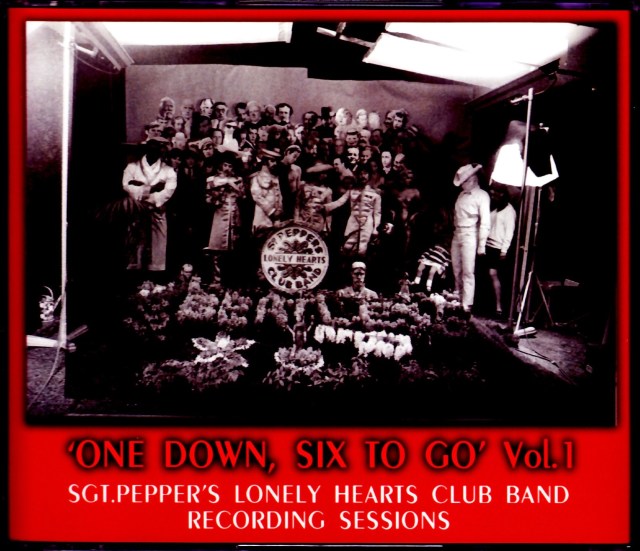

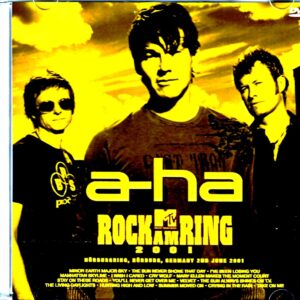
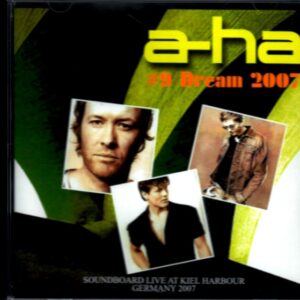
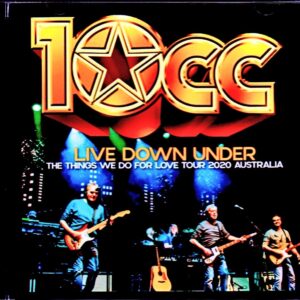
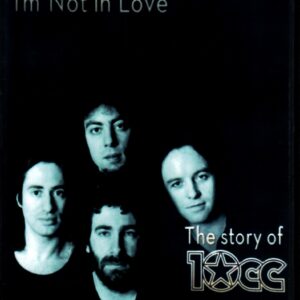
Reviews
There are no reviews yet.